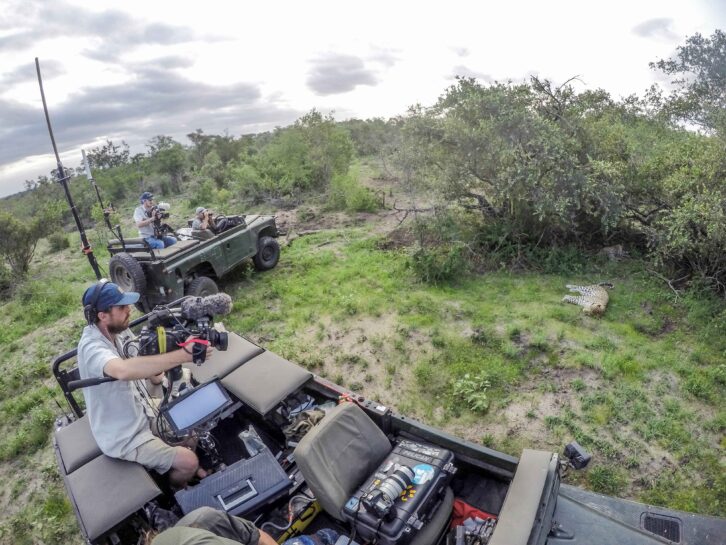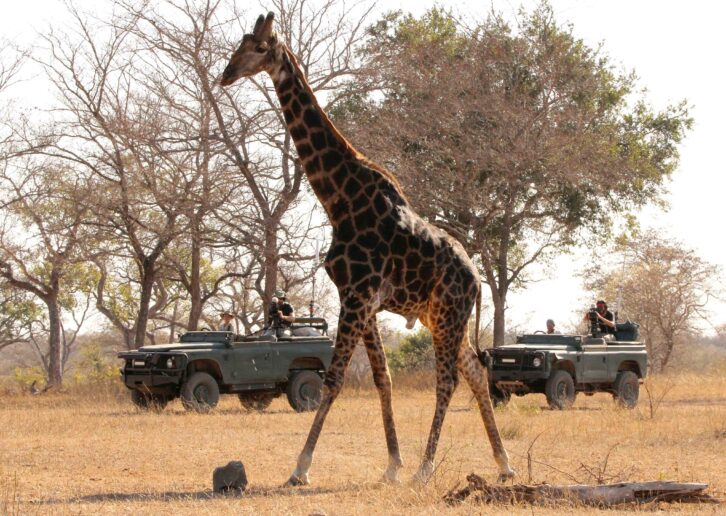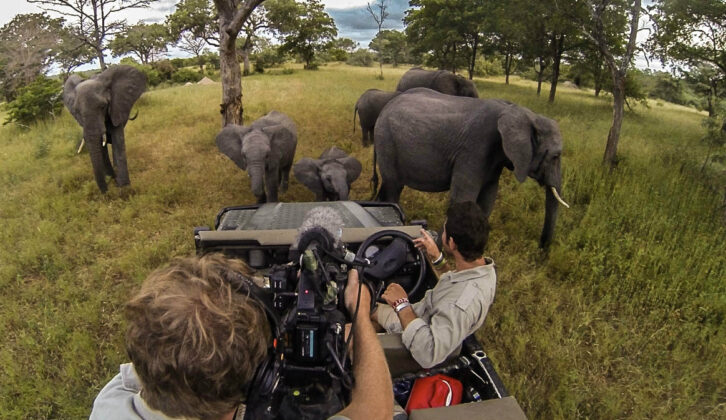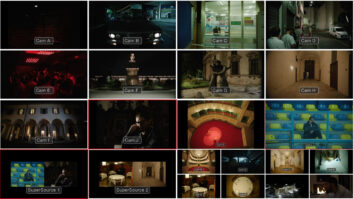Founded in 2007, WildEarth began broadcasting live safari the following year before launching as a 24-hour channel in August 2020 following growth in its audience driven by the pandemic.
The 50-stong team is mostly based in South Africa, with mission control in Johannesburg.
Last month the channel launched on Freeview with programming including live and interactive shows that aim to recreate the experience of being on a safari vehicle in remote African locations.
The channel aims to create immersive virtual nature experiences by connecting viewers with nature. broadcasting live for 11 hours a day – no mean feat when you’re broadcasting from remote locations without major fibre connections available.

“Over the course of 15 years, WildEarth has learned how to keep our equipment running in harsh environments at a very low cost compared to others,” co-founder Emily Wallington tells TVBEurope.
“Broadcasting from a fixed base and every single day allows us to continuously optimise and improve our set up; this reduces the cost per hour of live broadcasting to a fraction of that of short-term large-crew productions,” she adds.
To capture content the WildEarth team employed Sony Z-150 cameras for a number of years before moving to JVC HC500s last year. However, Wallington says the change proved to be disappointing relative to the advertised specifications. “Earlier this year Canon kindly provided us with two XF605 cameras that passed extensive field tests with flying colours and we’re looking to upgrade to these in the coming months,” she explains. “This will improve the overall visual quality of our broadcasts as well as allow us to start recording in 4K (which is another area in which the JVCs, unfortunately, disappoint).”
For audio, WildEarth employs a combination of Sennheiser lavalier mics (MKE Essential) for the naturalists’ audio and Rohde NTG4 rifle mics on the cameras for ambient sound capturing.

“For encoding the various camera feeds, we currently mostly use Teradek 755 encoders,” adds Wallington. “In HEVC mode these provide a good quality video feed at low bitrates. This makes them well-suited for our application where due to the remoteness and terrain characteristics of our sites the amount of available bandwidth is generally limited.”
For each of the daily safaris, WildEarth has camera operators and naturalists on site, as well as a broadcast engineer in Djuma. Most of the channel’s other staff are based at what Wallington describes as mission control in Johannesburg, with additionally a limited number of people working remotely.
To get the pictures and sound from the site of the safari, the team employ either bonded mobile systems or long-range wireless links to get the feeds back to Johannesburg.
“In our mission control the channel is created by our directors and from there, it is distributed to our various platform partners as well as our own website and app,” adds Wallington. “In addition, we have a cloud backup in London to cover any outages that might occur in South Africa.”

As well as being broadcast on Freeview in the UK, WildEarth is also available in Europe, the United States, Brazil and other LatAm countries (Samsung Plus, LG), as well as in South Africa and various other African countries (DStv, Canal+). “We have also recently launched on Jio and Samsung Plus in India and are carried in South Korea (LG). In addition to this we are globally available on our own app and website,” says Wallington.
“We are currently in negotiation with various platforms for expanded distribution, with a focus on deeper penetration in the US and UK markets, as well as India. And are exploring localisation as a way of easing our expansion beyond the English-speaking world.”
Launching on Freeview is a major next step in WildEarth’s ongoing distribution growth, says Wallington, adding that it makes the channel easily accessible to an additional 18 million households in a market with both a proven interest in wildlife content.
“Importantly, it also furthers our mission of connecting people with nature and growing what is already the largest safari vehicle in the world even further,” she states.







